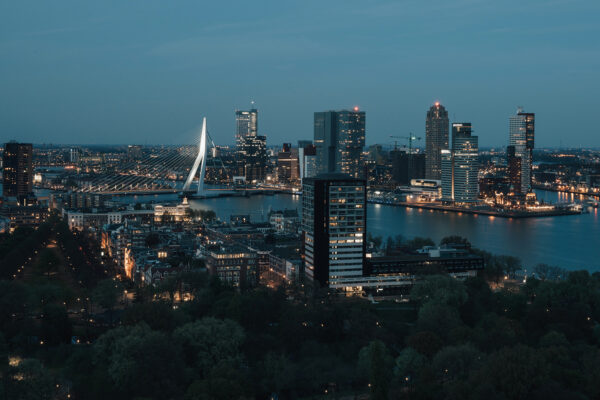
The Netherlands has a housing shortage of 300,000. The government’s ambition is to build 100,000 homes per year to keep up with population growth (which is entirely driven by immigration), but there is doubt it will meet this goal.
75,000 homes were built last year. Only 33,000 building permits were issued in the first half of 2022.
For a story in Wynia’s Week, I asked builders, developers, the construction lobby, economists and housing corporations why the going is so slow. They gave me ten reasons.
Some are Netherlands-specific. Provincial governments, which must parcel in building locations, underestimated population growth. Municipalities, which issue building permits, are understaffed. Judges won’t approve permits if construction causes nitrogen pollution and emissions from farms and industry aren’t reduced. (More on the Netherlands’ farm and nitrogen crisis here.)
Others are hopefully temporary: high prices of fuel, steel and wood caused by the war in Ukraine.
The remaining four explanations are relevant to other countries.
1. NIMBYism
Wealthy homeowners in small cities and towns around Amsterdam, The Hague and Utrecht don’t want construction in their proverbial backyard. Not so much because it’s a nuisance, but because additional homes could make their neighborhoods less attractive and would reduce the value of their properties.
The Netherlands Bureau for Economic Policy Analysis summarizes:
Local authorities limit the availability of building locations for the sake of spatial quality and other societal objectives.
Stefan Groot, senior housing economist at RaboResearch, is more blunt. He argues the interests of homeowners are overrepresented in local politics.
Homeowners vote. They attend public hearings. They have the wherewithal to sue if they don’t like a development.
Aspiring homeowners don’t get a vote in towns where they don’t yet live.
2. Towns prioritized commercial over residential
More Dutch people are working from home since the pandemic, yet cities and towns are slow to update zoning regulations that would allow offices to be converted into apartments. A spokesperson for Bouwend Nederland, the lobby of developers and construction companies, told me some municipalities have stopped accepting rezoning requests altogether for lack of staff.
Not all office space is fit for renovation. Groot points out that to convert a commercial area into residential, the municipality would also need to provide services, like public transport and schools. It may be cheaper to build a whole new neighborhood.
But Groot also faults municipalities for permitting too much commercial space and not enough residential. The Bureau for Economic Policy Analysis backs him up: municipalities were eager to sell or lease land to businesses to make a quick profit. They couldn’t have predicted COVID, but even prior to the pandemic there was a growing oversupply of office space and a shortage of homes. Local governments should have planned better.
3. Local politicians are demanding
“Municipalities often look to realize other ambitions alongside construction,” Wim de Waard of the Amsterdam-based housing corporation Eigen Haard told me.
The capital — under permanent left-wing rule — is notorious for latching on affordability and sustainability requirements to building permits.
Major developments in Amsterdam must include 40 percent social housing; the type De Waard’s group manages. Another 40 percent must be “affordable”: sold or rented out below market prices. Only 20 percent of apartments can turn a profit.
Little wonder developers are shying away from especially small projects. 20 out of 100 flats may be enough to turn a profit, but one or two apartments in a midsized building can’t make up for four or eight built at a loss.
Amsterdam requires all new buildings to install triple glazed windows and, where possible, solar panels on the roof. Which helps residents pay their energy bills, but it also raises the price of construction.
4. National government is demanding, too
Heat pumps, which generate warmth without gas, will become mandatory from 2026, replacing boilers.
The ceiling for rent control is due to be raised from €763 to €1,000 per month, bringing some 430,000 apartments into regulation. That’s eight out of ten currently unregulated apartments.
A third of all homes in the Netherlands are social housing. That’s down from 37 percent a decade ago, but still the highest share in Europe. Families qualify when they earn less than €45,000 per year, but residents are never evicted if their salary increases.
The “free” rental market, which has no income requirements nor rent control, has grown from 4 to 8 percent, but would fall back to 3 percent under the €1,000-per-month cutoff. As with Amsterdam’s 40-percent “affordable housing” rule, the regulation may benefit renters in the short term, but in the long term it will make especially small-scale rentals even less interesting to developers. Like converting offices and shops into apartments.
